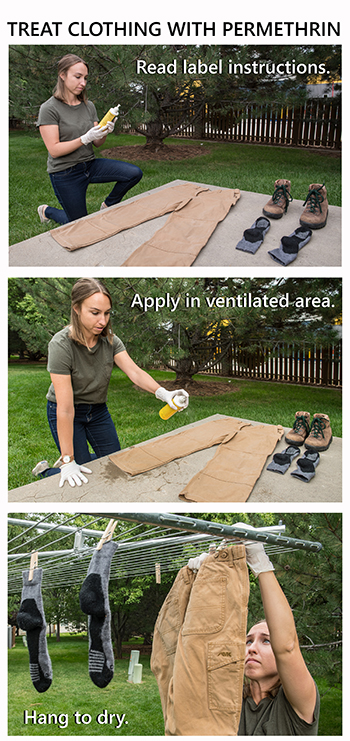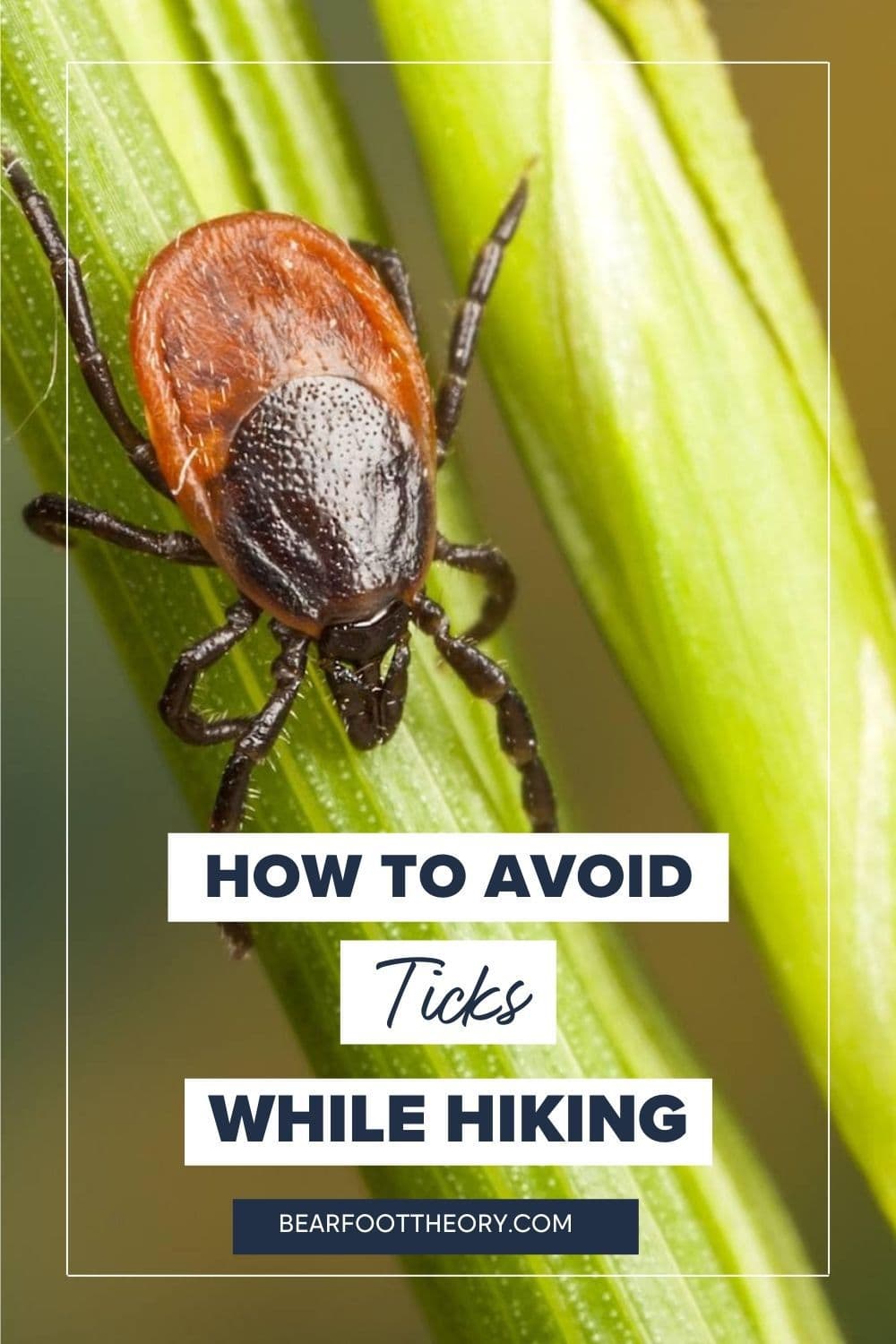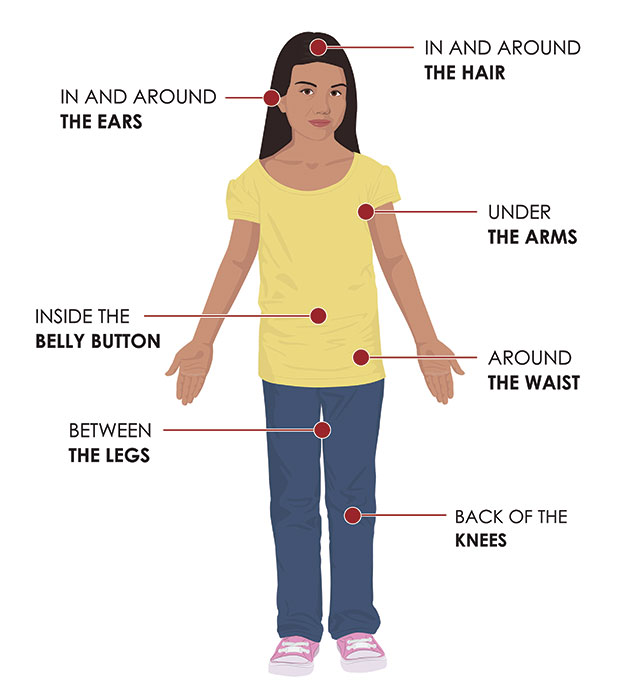To avoid ticks while hiking, wear long sleeves, pants, and tick repellent. Check for ticks after.
Ticks are common outdoor nuisances that can transmit diseases like Lyme disease. Taking preventive measures while hiking can help protect you from tick bites and potential health risks. By following a few simple tips, you can enjoy your outdoor adventures without worrying about ticks.
Remember to wear appropriate clothing, use tick repellent, and check your body for ticks after your hike. Stay safe and enjoy nature without the threat of tick-related illnesses.


Credit: www.amazon.com
Understanding Ticks
Learn how to avoid ticks while hiking to protect yourself from these pesky parasites. Understanding ticks and their behavior can help you take necessary precautions to prevent tick bites during outdoor activities. By following simple tips, you can reduce the risk of tick-borne diseases and enjoy your time in nature without worry.
Understanding Ticks: Ticks are small arachnids that feed on the blood of animals and humans. Identifying Common Ticks: There are several common species of ticks that hikers may encounter, such as the Blacklegged Tick and the Lone Star Tick. Understanding Tick-Borne Diseases: Ticks can transmit diseases like Lyme disease and Rocky Mountain spotted fever, so it’s crucial to protect yourself from tick bites when hiking.Preparing For A Tick-free Hiking Trip
Avoiding ticks while hiking is essential to ensure a safe and enjoyable outdoor experience. By taking the right precautions, you can significantly reduce the risk of encountering these pesky pests.
Choosing The Right Clothing
- Wear light-colored clothing to easily spot any ticks that might latch onto you.
- Opt for long-sleeved shirts and long pants to minimize skin exposure.
- Tuck your pants into your socks to create a barrier that ticks find hard to cross.
Using Tick Repellents
- Apply EPA-approved tick repellents containing DEET or Picaridin on exposed skin.
- Apply permethrin spray on clothing, shoes, and gear for extended protection.
- Regularly check for ticks on yourself and your gear during breaks.
During The Hike
Staying On Designated Trails
When hiking, it’s important to stick to designated trails to reduce the risk of encountering ticks, as they are commonly found in grassy and wooded areas. Trails are regularly maintained and are less likely to have tall grass and dense vegetation, which are ideal habitats for ticks. By staying on the designated trails, you can lower the chances of coming into contact with ticks.
Performing Regular Tick Checks
Periodically performing tick checks is essential in preventing possible bites. Ticks can be found attached to the skin, especially in moist and warm areas. After every hour of hiking, take a moment to inspect your clothing and body for any signs of ticks. Pay close attention to the ankles, behind the knees, and underarms, as these are common areas where ticks may attach themselves.

Credit: bearfoottheory.com
After The Hike
Once you’ve completed your exhilarating hike, it’s important to take a few precautionary measures to ensure that you haven’t inadvertently brought any ticks home with you. Ticks can carry harmful diseases, so it’s crucial to properly check yourself, your clothing, and any gear you took on the hike before entering your home.
Showering And Inspecting For Ticks
One of the first things you should do after a hike is to take a thorough shower. Not only does this help refresh and rejuvenate you, but it’s also an excellent opportunity to check for any ticks that may have attached themselves to your body. Ticks are often small and can be difficult to spot, so make sure to pay close attention to areas such as your armpits, groin, scalp, and behind your ears. If you discover any ticks, use fine-tipped tweezers to carefully remove them, ensuring that you grasp them as close to the skin as possible and pull straight out.
Cleaning Gear And Clothing
Another crucial step to take after your hike is to clean your gear and clothing properly. Ticks can easily cling to fabric, so it’s vital to eliminate any potential hitchhikers before heading indoors. Here’s what you can do:
- Inspect your clothing: Before entering your home, carefully examine your clothes for any ticks. Shake them out and brush them off outside. If possible, toss them in a high-heat dryer for at least 10 minutes to kill any remaining ticks.
- Wash your gear: If you carried any gear with you during the hike, such as backpacks or hats, make sure to check them thoroughly. Give them a good scrub in warm, soapy water, paying special attention to crevices where ticks could hide. Afterward, dry the gear in high heat to ensure all ticks are eliminated.
Remember, ticks can be resilient, so taking these precautions is essential to minimize the risk of bringing them into your home.
Seeking Medical Attention
When hiking, it is crucial to promptly seek medical attention if bitten by a tick to prevent potential illness. Immediate care can help mitigate any risks associated with tick-borne diseases and ensure your safety.
Recognizing Symptoms Of Tick-borne Diseases
Ticks can transmit a variety of diseases, such as Lyme disease, babesiosis, and anaplasmosis, through their bites. Being able to recognize the symptoms of these tick-borne diseases is crucial for seeking medical attention early. If you have been hiking in tick-infested areas, it’s important to familiarize yourself with the common symptoms associated with these illnesses. Some common symptoms to watch out for include: 1. Fever: One of the initial signs of a tick-borne disease is an unexplained high temperature. If you develop a fever following a tick bite or hiking activity in an area known for ticks, it may be a cause for concern. 2. Rash: A distinct rash, particularly a bullseye-like rash known as erythema migrans, often appears within a few days to several weeks after a tick bite. This rash usually expands outward from the site of the bite and may be accompanied by other flu-like symptoms. 3. Headache and Fatigue: Tick-borne illnesses can cause persistent headaches and fatigue that do not improve with rest. If you have been experiencing these symptoms, especially after a potential tick exposure, it’s important to consider seeking medical attention.Knowing When To See A Doctor
While not every tick bite leads to an infection, it’s crucial to know when to seek medical attention. Prompt diagnosis and treatment of tick-borne diseases can prevent complications and long-term health issues. Here are a few guidelines to follow: 1. Tick-bite-related Symptoms: If you develop any symptoms associated with tick-borne diseases, such as fever, rash, headache, or fatigue, after being exposed to ticks, it’s advisable to consult a healthcare professional. 2. Tick Attached for Longer Periods: If you discover a tick attached to your skin and it has been there for more than 24 hours, it is recommended to seek medical advice. The longer a tick is attached, the higher the risk of disease transmission. 3. Known Tick-Infested Area: If you have been hiking or spending time in an area known for high tick populations and you experience any unexplained illness or symptoms, it is important to consult a doctor. They can evaluate your symptoms and provide appropriate treatment if needed. Remember, the earlier tick-borne diseases are detected, the better the chances of successful treatment. Seeking medical attention promptly can help prevent potential complications and ensure your overall health and well-being.
Credit: www.cdc.gov
Frequently Asked Questions Of Avoid Ticks Hiking
Q: How Can I Avoid Ticks While Hiking?
A: To avoid ticks while hiking, wear long-sleeved shirts and pants, use insect repellent with DEET, stay on designated trails, and check for ticks regularly.
Conclusion
Preventing tick bites while hiking is crucial for your health. By following the tips and techniques mentioned in this blog post, such as wearing protective clothing and using insect repellent, you can lower the risk of tick-related illnesses. With these precautions, you can enjoy the great outdoors without worrying about tick bites.
